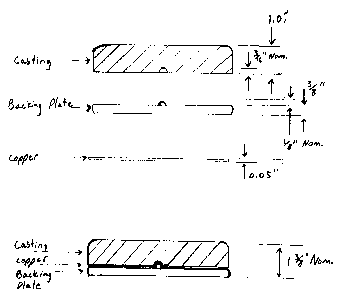Some of the information on this Web page has been provided by external sources. The Government of Canada is not responsible for the accuracy, reliability or currency of the information supplied by external sources. Users wishing to rely upon this information should consult directly with the source of the information. Content provided by external sources is not subject to official languages, privacy and accessibility requirements.
Any discrepancies in the text and image of the Claims and Abstract are due to differing posting times. Text of the Claims and Abstract are posted:
| (12) Patent Application: | (11) CA 2578964 |
|---|---|
| (54) English Title: | DOMITE ASSEMBLY POINT |
| (54) French Title: | DISPOSITIF D'ASSEMBLAGE DU TYPE « DOMITE » |
| Status: | Deemed Abandoned and Beyond the Period of Reinstatement - Pending Response to Notice of Disregarded Communication |
| (51) International Patent Classification (IPC): |
|
|---|---|
| (72) Inventors : |
|
| (73) Owners : |
|
| (71) Applicants : |
|
| (74) Agent: | |
| (74) Associate agent: | |
| (45) Issued: | |
| (22) Filed Date: | 2007-02-14 |
| (41) Open to Public Inspection: | 2008-08-14 |
| Availability of licence: | N/A |
| Dedicated to the Public: | N/A |
| (25) Language of filing: | English |
| Patent Cooperation Treaty (PCT): | No |
|---|
| (30) Application Priority Data: | None |
|---|
In producing a laminated white iron composite the white iron casting is bonded
to a mild
steel backing plate through a brazing operation. The adjacent mating surfaces
of the
casting and backing plate are secured together along with the copper brazing
agent in
such an orientation so as to promote an acceptable bond and to eliminate any
shift from
the desired orientation. The Domite Assembly Point incorporates a recessed
depression
into the casting that an adjacent raised Point on the steel backing plate fit
into allowing
the assembled pieces to fit together without the need of additional fastening
methods such
as wire or spot welding. The assembled parts can then be brazed using standard
techniques.
Note: Claims are shown in the official language in which they were submitted.
Note: Descriptions are shown in the official language in which they were submitted.

2024-08-01:As part of the Next Generation Patents (NGP) transition, the Canadian Patents Database (CPD) now contains a more detailed Event History, which replicates the Event Log of our new back-office solution.
Please note that "Inactive:" events refers to events no longer in use in our new back-office solution.
For a clearer understanding of the status of the application/patent presented on this page, the site Disclaimer , as well as the definitions for Patent , Event History , Maintenance Fee and Payment History should be consulted.
| Description | Date |
|---|---|
| Time Limit for Reversal Expired | 2010-02-15 |
| Application Not Reinstated by Deadline | 2010-02-15 |
| Inactive: Adhoc Request Documented | 2009-11-23 |
| Deemed Abandoned - Failure to Respond to Maintenance Fee Notice | 2009-02-16 |
| Application Published (Open to Public Inspection) | 2008-08-14 |
| Inactive: Cover page published | 2008-08-13 |
| Inactive: First IPC assigned | 2007-05-02 |
| Inactive: IPC assigned | 2007-05-02 |
| Application Received - Regular National | 2007-03-20 |
| Filing Requirements Determined Compliant | 2007-03-20 |
| Inactive: Office letter | 2007-03-20 |
| Inactive: Filing certificate - No RFE (English) | 2007-03-20 |
| Correct Applicant Requirements Determined Compliant | 2007-03-20 |
| Abandonment Date | Reason | Reinstatement Date |
|---|---|---|
| 2009-02-16 |
| Fee Type | Anniversary Year | Due Date | Paid Date |
|---|---|---|---|
| Application fee - small | 2007-02-14 |
Note: Records showing the ownership history in alphabetical order.
| Current Owners on Record |
|---|
| ANDREW GUIDUCCI |
| Past Owners on Record |
|---|
| None |